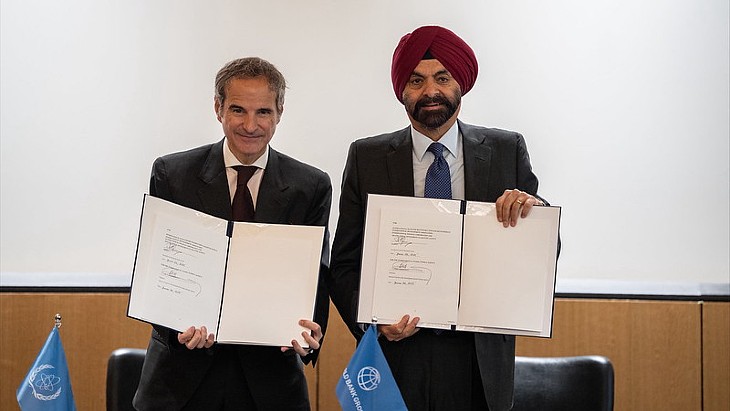Joint venture formed to spur SMR deployment in Sweden
.jpg)
Uniper said the collaboration is designed as a joint venture and "is open to a number of different players in industry and academia". The project aims to build a lead-cooled reactor at Oskarshamn by 2030. Eventually, the goal of the collaboration is to enable the commercialisation of these reactors in Sweden in the 2030s.
An academic network based at KTH is connected to the project. The Sunrise (Sustainable Nuclear Research In Sweden) project - whose partners include KTH, Luleå University and Uppsala University - has already received SEK50 million (USD6 million) in funding from the Foundation for Strategic Research to develop the design, material technology and safety analysis for an advanced lead-cooled research and demonstration reactor.
"Through this initiative, Sweden is now also taking a concrete step towards developing technology, know-how and expertise in new advanced nuclear power," Uniper said.
Uniper, LeadCold and KTH have applied to the Swedish Energy Agency for a grant of SEK125 million. The partners will put the funds towards building an electrically powered non-nuclear prototype of LeadCold's SEALER (Swedish Advanced Lead Reactor) concept lead-cooled reactor at the Oskarshamn plant site for testing and verifying materials and technology in an environment of molten lead at high temperatures. The prototype will be operated for five years starting in 2024.
Janne Wallenius, founder of LeadCold, said the technology the company has developed "is now so mature that we, together with Uniper, can start building a non-nuclear prototype to enable a commercialisation of a new reactor at a later stage". Wallenius added: "It is a big and important step forward for Swedish reactor technology."
The small lead-cooled SEALER design is claimed to generate 3-10 MWe over a 10-30 year period without refueling. After operation, the first SEALER units will be transported to a centralised recycling facility.
"We see a clear role for nuclear power in the energy system of the future, and we are therefore investing in developing the nuclear power of the future in collaboration with LeadCold, which has patents on design and materials for a small modular reactor with lead cooling and passive safety," said Uniper Sweden CEO Johan Svenningsson. Uniper Sweden is the largest shareholder in OKG, owner of the Oskarshamn plant. "By starting work in good time, we create freedom of action later - both for ourselves and for Sweden as a country.
"Given the short period of time that remains until we [aim to] have achieved net-zero emissions in Sweden, it is important that we do not close any doors. This includes politicians and authorities also supporting the development of new nuclear power. Such an initiative would also serve as a shot in the arm for academic research in the field of energy."
Pär Olsson, head of the department of physics at KTH and director of the Sunrise project, said KTH looks forward to an expanded collaboration with Uniper and LeadCold. "This is directly in line with the long-term strategy that we have identified within Sunrise and constitutes the second step of three for the development of new nuclear technology on Swedish soil," he said.
LeadCold is a spin-off from KTH in Stockholm, where lead-cooled reactor systems have been under development since 1996. The company was founded in 2013 as a joint stock company. It has a Canadian subsidiary, LeadCold Reactors Inc, which is registered in Alberta, Northwest Territories and Nunavut.
_92619.jpg)


_84504.jpg)





..._58412.jpg)

